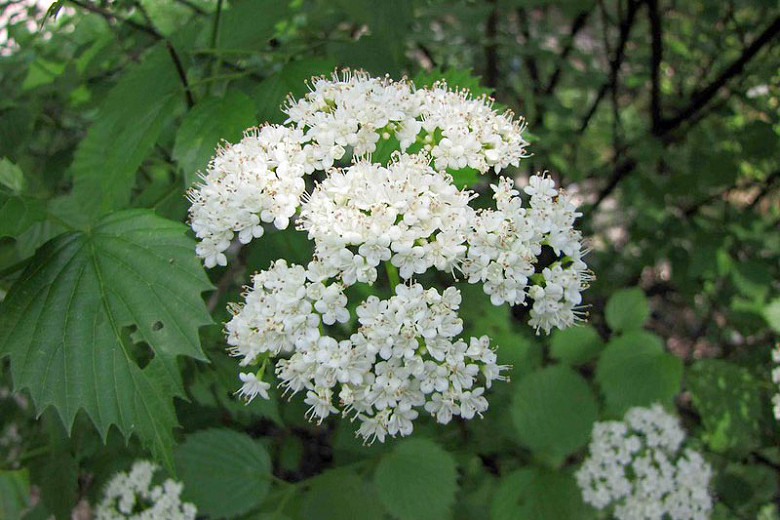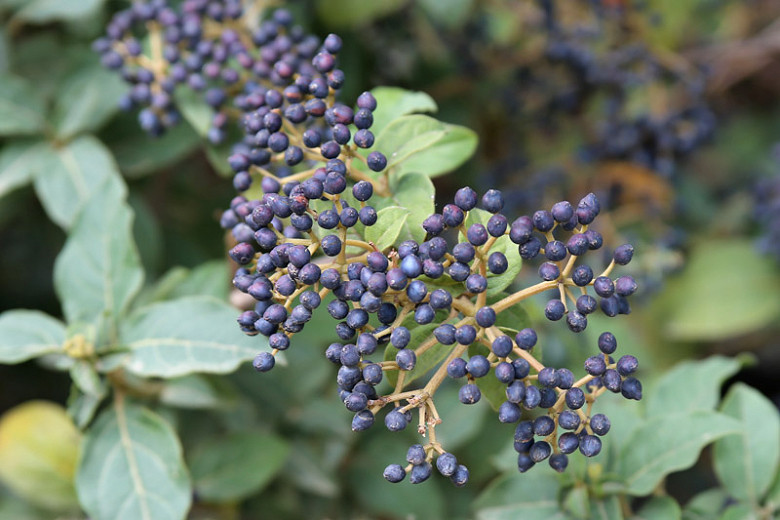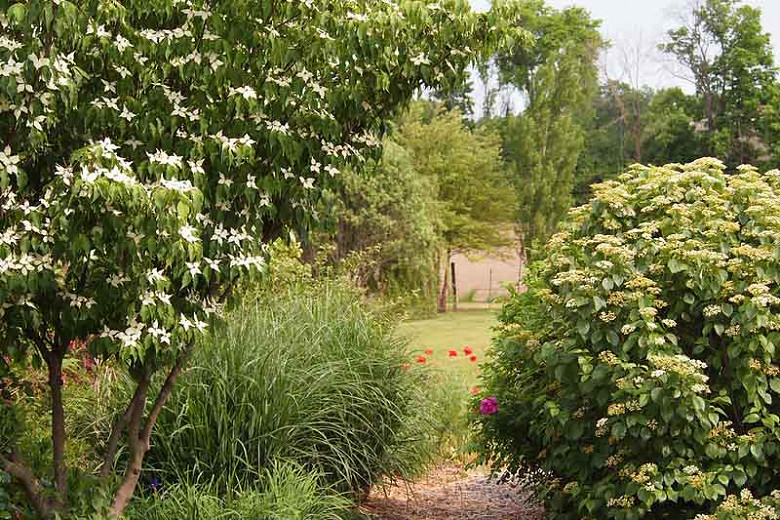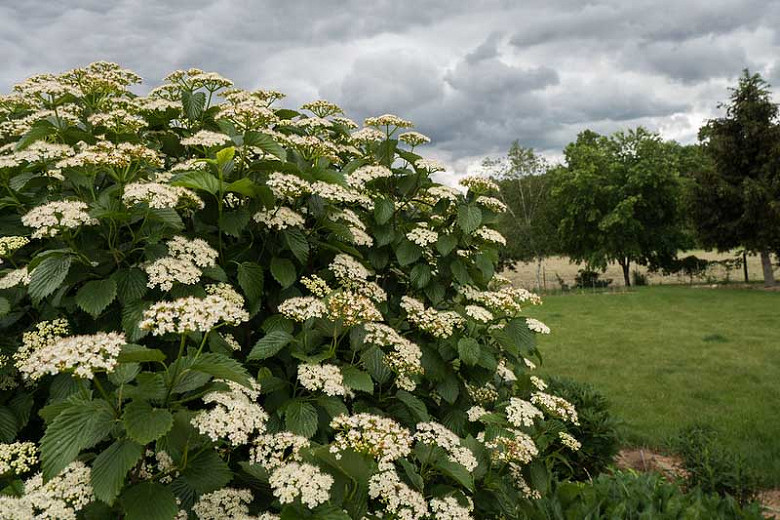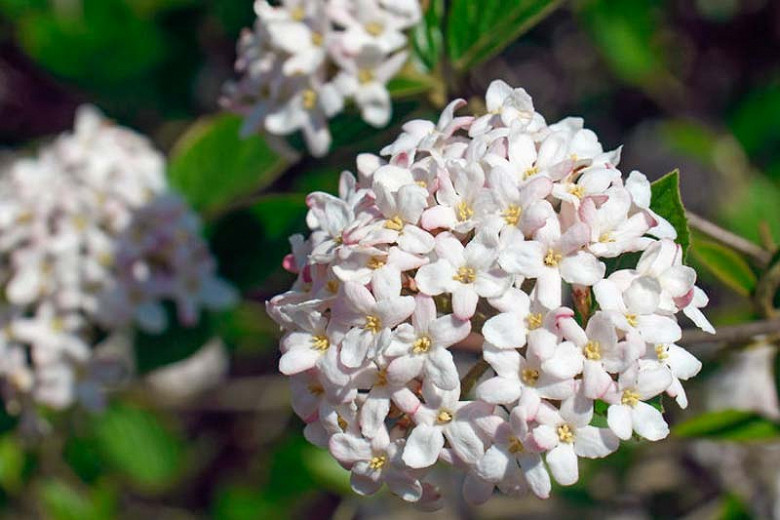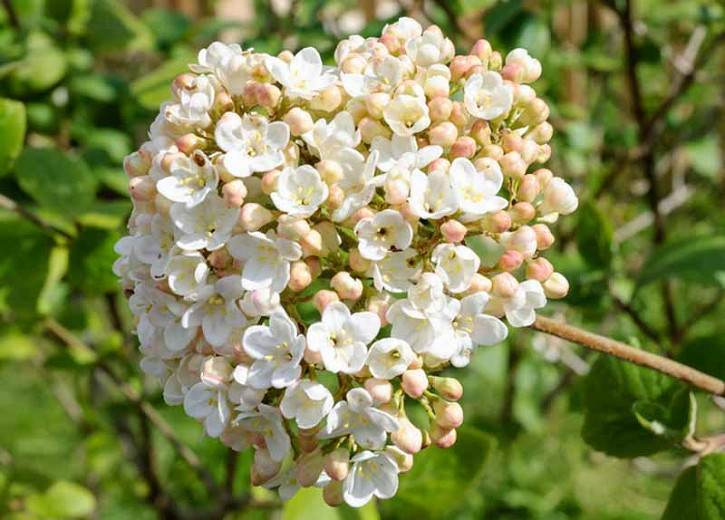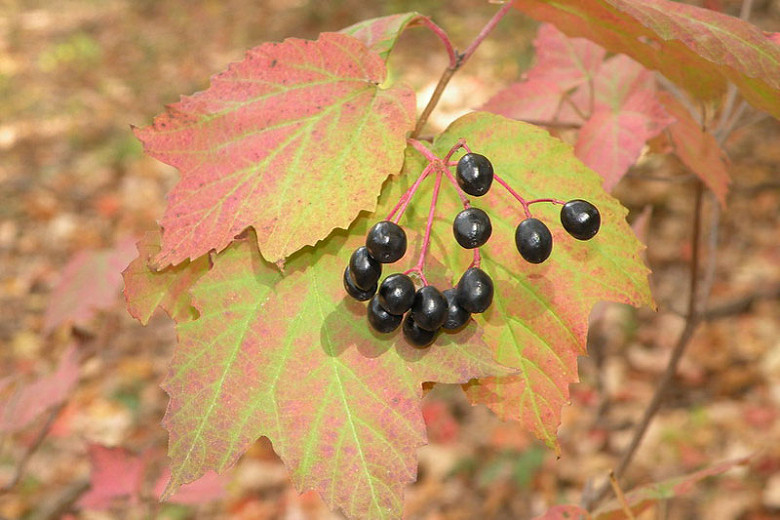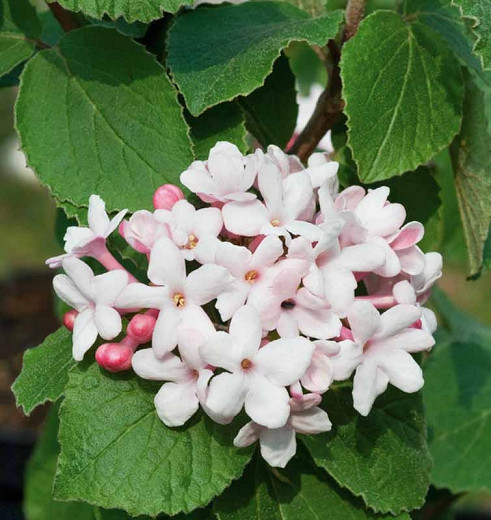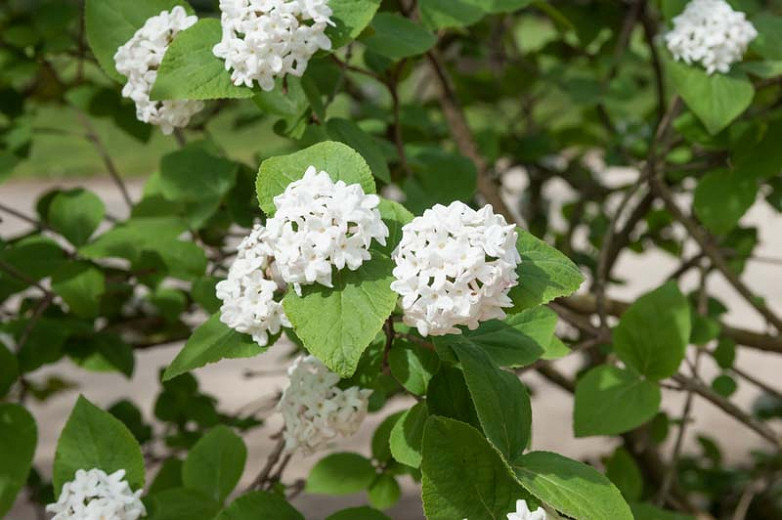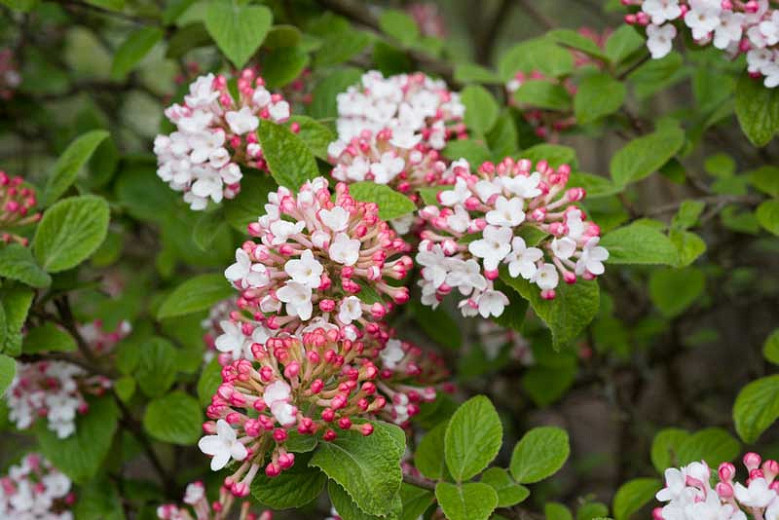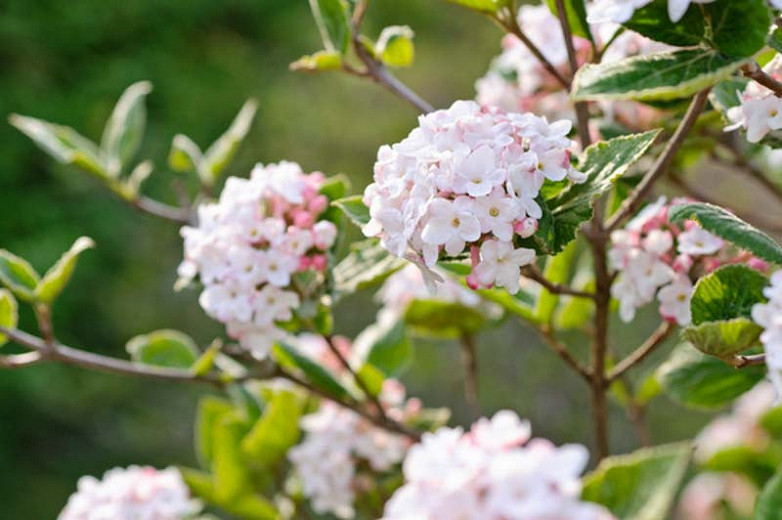Viburnum dentatum (Southern Arrow Wood)
Vigorous and reliable, Viburnum dentatum (Southern Arrow Wood) is an attractive multi-stemmed deciduous shrub with a profusion of flat clusters packed with creamy-white flowers in late spring to late summer. Attractive to butterflies, bumblebees, and other native bees, they are followed by blue-black berries that are devoured by birds and wildlife. Its slender, elongate, and ascending branches are clothed with ovate, coarsely toothed, lustrous dark green leaves, 4 in. long (10 cm). They turn shades of yellow, orange, and red in the fall. Native to eastern North America, Southern Arrow Wood occurs naturally in low alluvial woods on terraces and wooded slopes. Incredibly cold-hardy, this viburnum species prefers moist, well-drained soils. Southern Arrow Wood is an excellent species for wildlife food and habitat, landscape, and beautification. It makes a lovely hedge or screen and is a must in bird gardens.
- Grows up to 6-10 ft. tall and wide (180-300 cm).
- Performs best in full sun to part shade in average, acidic, moist, well-drained soils. Tolerates full shade as well as a wide range of soil conditions, including wet sites and some dryness as well.
- Good for shrub borders, hedges, and screens or foundation plantings. Great for open woodland gardens.
- Low maintenance, this plant has no serious pest or disease issues. Keep an eye out for whiteflies or the viburnum leaf beetle. Southern Arrow Wood is deer-resistant.
- Prune as needed immediately after flowering.
- Propagated either by seed or softwood cuttings.
- Native to the Eastern United States and Canada from Maine south to Northern Florida and Eastern Texas.
Requirements
| Hardiness | 2 – 8 |
|---|---|
| Climate Zones | 1, 1A, 1B, 2, 2A, 2B, 3, 3A, 3B, 4, 5, 6, 7, 8, 9, 10, 11, 14, 15, 16, 17, 18, 19, 20, 21 |
| Plant Type | Shrubs |
| Plant Family | Viburnum |
| Exposure | Full Sun, Partial Sun, Shade |
| Season of Interest | Spring (Late)Summer (Early,Mid,Late)Fall |
| Height | 6' – 10' (180cm – 3m) |
| Spread | 6' – 10' (180cm – 3m) |
| Spacing | 72″ – 120″ (180cm – 300cm) |
| Water Needs | Average |
| Maintenance | Low |
| Soil Type | Clay, Loam, Sand |
| Soil pH | Acid, Neutral |
| Soil Drainage | Moist but Well-Drained |
| Characteristics | Showy, Fruit & Berries |
| Native Plants | United States, Midwest, Illinois, Indiana, Iowa, Michigan, Missouri, Ohio, Wisconsin, Northeast, Delaware, Maine, Massachusetts, Maryland, New Hampshire, New Jersey, New York, Pennsylvania, Rhode Island, Vermont, Southeast, Alabama, Arkansas, Florida, Georgia, Kentucky, Louisiana, Mississippi, North Carolina, South Carolina, Tennessee, Virginia, West Virginia, Southwest, Texas |
| Tolerance | Clay Soil, Deer, Dry Soil, Wet Soil |
| Attracts | Bees, Birds, Butterflies |
| Garden Uses | Beds and Borders, Hedges and Screens, Rain Gardens |
| Garden Styles | Informal and Cottage, Prairie and Meadow, Traditional Garden |

